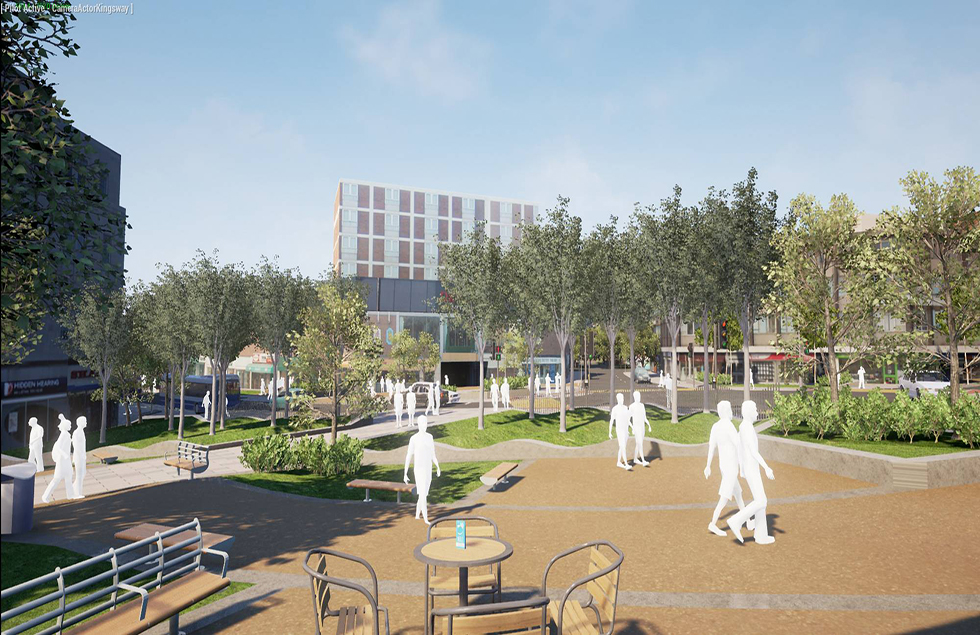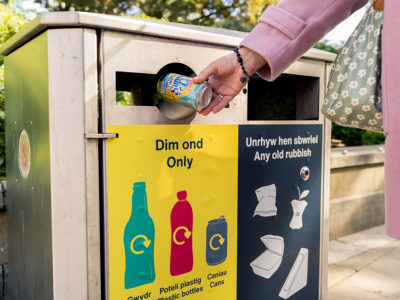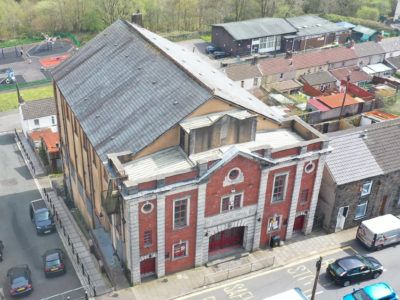How can plants be implemented in a city?
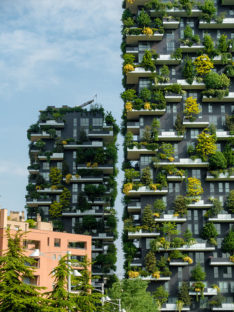
Vertical Forest’s two residential towers are 110 and 76 metres high, built in the centre of Milan on the edge of the Isola neighbourhood
Bosco Verticale, Milan
Bosco Verticale (Vertical Forest) is designed by Boeri Studio (Stefano Boeri, Gianandrea Barreca and Giovanni La Varra). Horticulturalists and botanists were also involved in the project.
The two residential towers were opened in October 2014. Each tower houses 900 trees, 5,000 shrubs and 11,000 perennial plants, which help mitigate smog and produce oxygen. Plants are the most effective way of absorbing carboy dioxide. The total of 20,000 plants convert approximately 44,000 pounds of carbon each year.
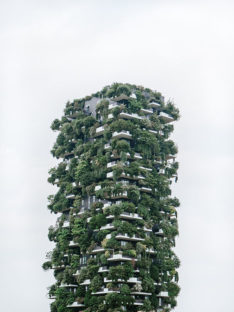
Each tower of the Vertical Tower is equivalent to an area of urban sprawl of up to 50,000 sq m
The many species of plants also aim to attract new birds and insects to the city. The vegetation helps the residents of the Bosco Verticale too, mitigating the temperatures, giving them privacy and obstructing the city noise.
The towers are also self-sufficient. They use renewable energy from solar panels and filtered waste water to sustain the lives of the plants.
The Welsh city wants to increase the amount of plants in the urban area to meet its target by 2044
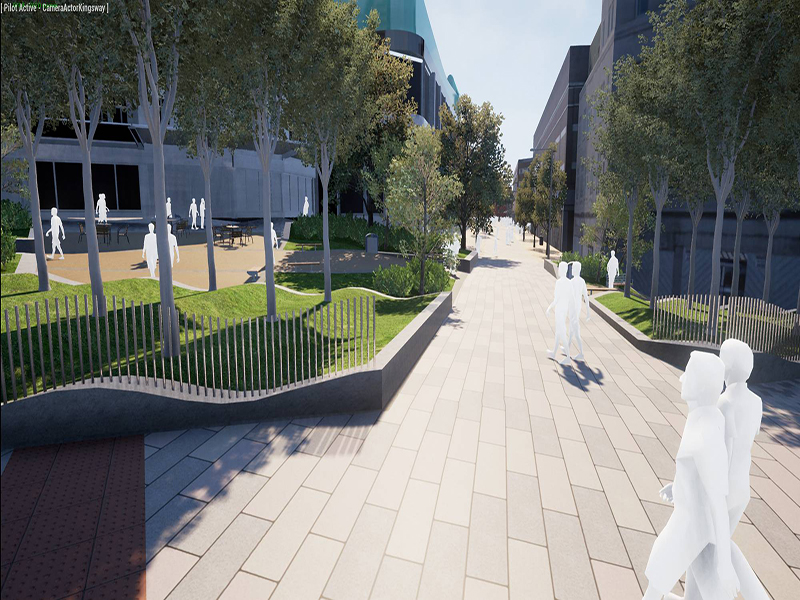
Photo provided by Swansea Council
Swansea council is moving towards a greener city by increasing the percentage of vegetation in the city centre to meet their target by 2044.
The strategy was developed by Swansea council with Natural Resources Wales (NRW) and the Green Infrastructure Consultancy.
The strategy aims to increase Swansea city centre’s greenery from 13% to 26% by 2030 and the tree canopy by 25% by 2044.
The renovations are part of a scheme to prepare Swansea for climate change, lowering the risk of flooding, bringing more biodiversity, cleaner air and water, and less CO2emissions.
It will also help Swansea become a more “economically prosperous hub” said the council, by encouraging the building of green infrastructures in the area.
Cllr Robert Francis-Davies, cabinet member for investment, regeneration and tourism, said: “Hundreds of members of the public have fed into the creation of this exciting strategy – I thank them for their valuable input.
“The overwhelming message from our public engagement was that city nature is important to people; it increases their enjoyment and the time they spend in the city centre.”
Martyn Evans, head of South Wales operations for NRW, added that the project will provide the opportunity to create a vibrant city, improving the wellbeing of residents and visitors, while also making a home for wildlife.
Residents of Swansea have commented on the strategy, stating the council should have kept the road layout as it was, adding greenery to it.
Sian Bevan, a Swansea resident, said: “They’ve dug up and replanted so much greenery over the last 10 years with their ludicrous, never-ending road layout changes. Had they left things be, we may have had mature shrubs and trees by now, and a working road system.”
Others believe that while the changes will be an hindrance for the community, they will eventually benefit Swansea.
How can plants be implemented in a city?

Vertical Forest’s two residential towers are 110 and 76 metres high, built in the centre of Milan on the edge of the Isola neighbourhood
Bosco Verticale, Milan
Bosco Verticale (Vertical Forest) is designed by Boeri Studio (Stefano Boeri, Gianandrea Barreca and Giovanni La Varra). Horticulturalists and botanists were also involved in the project.
The two residential towers were opened in October 2014. Each tower houses 900 trees, 5,000 shrubs and 11,000 perennial plants, which help mitigate smog and produce oxygen. Plants are the most effective way of absorbing carboy dioxide. The total of 20,000 plants convert approximately 44,000 pounds of carbon each year.

Each tower of the Vertical Tower is equivalent to an area of urban sprawl of up to 50,000 sq m
The many species of plants also aim to attract new birds and insects to the city. The vegetation helps the residents of the Bosco Verticale too, mitigating the temperatures, giving them privacy and obstructing the city noise.
The towers are also self-sufficient. They use renewable energy from solar panels and filtered waste water to sustain the lives of the plants.

